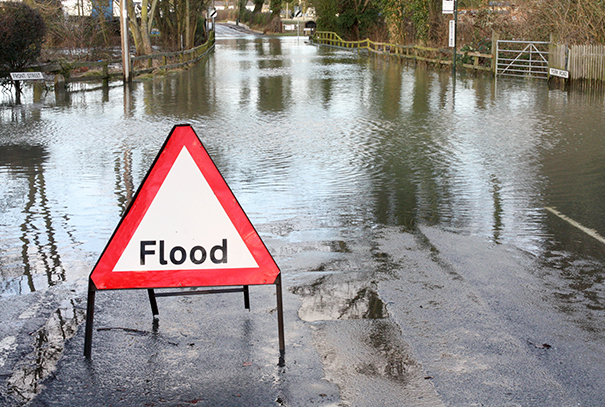An analysis of the most pressing concerns based on insights from 1,000 UK business leaders.

Unpredictable weather resulting in heavy rainfall can bring major challenges in protecting homes and business premises from flooding and water damage.

Significantly, we believe that having adequate specialist home insurance cover in place has become essential.
Flooding is becoming a more regular occurrence in the UK and has become a major issue, meaning homes and businesses remain vulnerable. Coupled with turbulent weather patterns, the UK has experienced intense storms leading to flash and prolonged periods of flooding which is damaging homes. When a home is flooded, it can be devastating and cause considerable disruption to you and your family.1
Consider having a plan in place to limit the damage to your home, including taking extra precautions and preventative measures. This action could make it easier to get you and your family back to your normal daily life. Ensuring you have adequate insurance for your home and its contents, is another layer of protection you can put in place.
Organise and pack a kit containing waterproof clothing, blankets, first aid kit and torch, don’t forget to include prescription medicines. Place important documents, such as passport, driving licence, certificates and documents related to your insurance, in a watertight bag or box so that they are securely stored and easily accessible.
Floodwater can enter a property through a number of routes. Water can pour through gaps in the floor, under doors and find its way through airbricks on exposed walls. Also your home can be exposed to water damage through drains and pipes as the pressure created by flooding builds up. Fortunately there are a number of measures you can take to help prevent floodwater getting into your home, and to limit flood damage if it does happen.
There are many tried and tested ways to manage the flow of water away from your property, both temporary measures and more permanent solutions.
For some properties, their geographical location or design can mean they are still prone to flooding no matter what you do. There are a few steps to take to make home more flood resilient, although it is impossible to guarantee floodwater will not enter a property these include:
Lastly, when it comes to insurance cover, make sure the property is appropriately covered. Carefully read over the policy cover details and terms for buildings and contents insurance. Understand if it includes flood damage and the associated limits, when it comes to repair costs or replacing damaged items. If there is any doubt speak to the insurance provider for clarification. We would be happy to discuss specialist home insurance cover, so please get in touch if you would like any more information or a quote.
If you need specialist home insurance cover, or would like a review of your existing arrangements, please get in touch.
Contact: Non-Standard Home Insurance Team
Call: 0345 000 0438
The sole purpose of this article is to provide guidance on the issues covered. This article is not intended to give legal advice, and, accordingly, it should not be relied upon. It should not be regarded as a comprehensive statement of the law and/or market practice in this area. We make no claims as to the completeness or accuracy of the information contained herein or in the links which were live at the date of publication. You should not act upon (or should refrain from acting upon) information in this publication without first seeking specific legal and/or specialist advice. Arthur J. Gallagher Insurance Brokers Limited accepts no liability for any inaccuracy, omission or mistake in this publication, nor will we be responsible for any loss which may be suffered as a result of any person relying on the information contained herein.
Arthur J. Gallagher Insurance Brokers Limited is authorised and regulated by the Financial Conduct Authority. Registered Office: Spectrum Building, 7th Floor, 55 Blythswood Street, Glasgow, G2 7AT. Registered in Scotland. Company Number: SC108909. ajg.com/uk